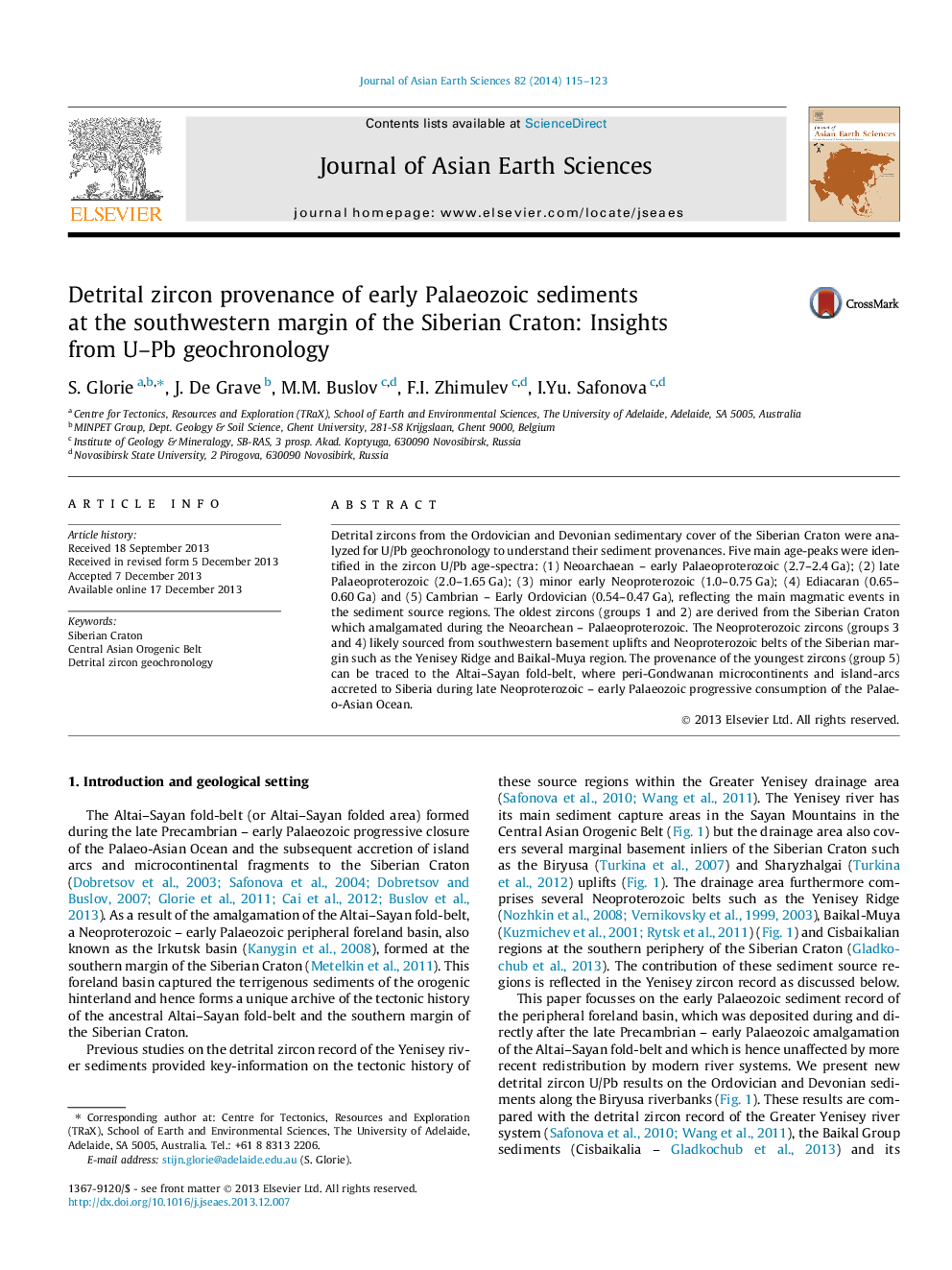| Article ID | Journal | Published Year | Pages | File Type |
|---|---|---|---|---|
| 4730807 | Journal of Asian Earth Sciences | 2014 | 9 Pages |
•Zircon age-spectra are presented for Ordovician – Devonian south Siberian detritus.•Neoarchaen – Palaeoproterozoic zircons were derived from the Siberian Craton.•Neoproterozoic zircons were mainly derived from south Siberian inliers and belts.•Palaeozoic zircons were derived from the Altai–Sayan fold-belt.•Zircon provenance changed from Siberian to Altai–Sayan domination during the Devonian.
Detrital zircons from the Ordovician and Devonian sedimentary cover of the Siberian Craton were analyzed for U/Pb geochronology to understand their sediment provenances. Five main age-peaks were identified in the zircon U/Pb age-spectra: (1) Neoarchaean – early Palaeoproterozoic (2.7–2.4 Ga); (2) late Palaeoproterozoic (2.0–1.65 Ga); (3) minor early Neoproterozoic (1.0–0.75 Ga); (4) Ediacaran (0.65–0.60 Ga) and (5) Cambrian – Early Ordovician (0.54–0.47 Ga), reflecting the main magmatic events in the sediment source regions. The oldest zircons (groups 1 and 2) are derived from the Siberian Craton which amalgamated during the Neoarchean – Palaeoproterozoic. The Neoproterozoic zircons (groups 3 and 4) likely sourced from southwestern basement uplifts and Neoproterozoic belts of the Siberian margin such as the Yenisey Ridge and Baikal-Muya region. The provenance of the youngest zircons (group 5) can be traced to the Altai–Sayan fold-belt, where peri-Gondwanan microcontinents and island-arcs accreted to Siberia during late Neoproterozoic – early Palaeozoic progressive consumption of the Palaeo-Asian Ocean.
